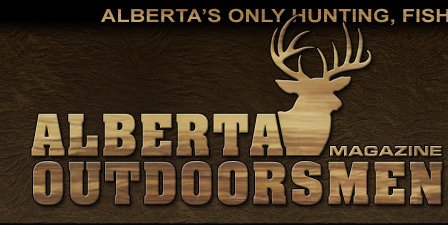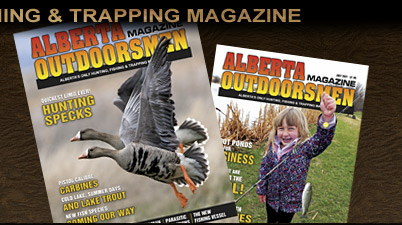|
 |
 |
I managed to get out this morning for a duck hunt with a good friend of mine. We secured permission yesterday on a hailed out/cut pea field that the ducks have been hitting quite regularly (big thanks to the farmer for letting us on!).
Of course, I took my six-year-old lab with me, as for me, the dog work is more fun than the shooting.
Anybody that knows me knows that I train my dogs all year ‘round for hunt tests and field trials. I don’t compete much, as I’m usually working, but I do the training anyway. For me, it’s fun, and keeps my dogs and I active and out of trouble.
Anyway, we set up under the cover of darkness filling the stubble straps on our layout blinds and the dog blind with pea straw and “strategically” placing the decoys to lure the ducks into position for a shot. With our gear in place, we parked the trucks at the far side of the field, I let my dog out of the truck, and we headed back to our pea straw concealed layout blinds.
My dog knows this drill... we have done it many times throughout her life and hopefully, many more times to come. As we walked across the field, I never had to utter a word to the dog, as she stayed close by, bouncing in excited circles around my friend and I as we walked back to the blinds. When we were probably 30 yards away from the decoy spread, my dog instinctively ran over and slipped into her dog blind and waited eagerly (for what it’s worth, I like the dog blind. I feel it provides the dog a place to go, I can keep her safely away from the shooting, and provides a bit of a buffer from the potential hearing damage caused by the shotgun blast.).
We had timed the setup just about perfectly. Ten minutes before legal light, we were back at our blinds and waiting for the birds. Already we had a few flocks buzz by to check out the decoys but they immediately came to their senses when they saw us standing there. All the signs were pointing to a fun morning.
Just after legal light, the birds started coming to the field for their meal of peas. It wasn’t long before we had our chance at several flocks of ducks, managing to shoot some doubles and triples, which fills the bag limit pretty quick. After each round of shooting was done, I would release my dog on her name. She would run out, pick up a duck, promptly return it to hand, turn, look at the next bird, and wait to be sent again. After all the birds were picked up, I would just tell her to “hide” and she would dive back into her blind and wait for the next flock, eagerly scanning the sky for the birds to approach.
However, while she did watch and pick up almost every duck, she didn’t see them all. Unfortunately, it wasn’t all clean shooting. We clipped one duck that sailed about 80 yards before succumbing to its injuries and dropping to the field – the dog never saw it fall. Without getting out of my blind, I called her over to me, lined her in the direction of the bird, gave her a “back” command, and off she went, running in a general straight line until she encountered the duck. She snatched it up and delivered it to me just as she did with all the others.
 |
| Mike Pye with his retriever. According to Mike, training for hunt tests or field trials pays off! |
Unfortunately, we also ended up with two cripples during the hunt. One of which wasted no time running across the field. Luckily, my dog saw this one, I released her, and she kicked in her afterburners and launched herself out of the blind, running down the bird, fetching, it and delivering it to me where I quickly and humanely dispatched it. Without a dog, there’s likely no way I would have caught that duck.
The second cripple sailed and dropped on the field and proceeded to wind its way into some of the thicker standing stubble that was left. I decided to walk the dog over to where I last saw it, gave her a “hunt it up” cue, and she quickly and methodically worked the cover for about 50 yards when she came up with the bird. Again, no way I would have found the bird without a dog.
After bagging a two-man limit of ducks, we were cleaned up and headed home to clean birds and relax for the rest of the day – unfortunately work cuts into duck season so it’s back to the office tomorrow.
On the drive home, I thought about how my dog worked for me today, and then how often I hear from people who want retrievers say, “I don’t want to compete in field trials or hunt tests; I just want a good hunting dog.” Or, “I don’t need to train for competitions; I just want a dog that will pick up my ducks.” I’ve heard these statements or similar ones numerous times in the past. And I always say you don’t need to compete, but the training for these types of events leads to a well-trained hunting dog. Usually though, my comment has fallen on deaf ears by that point.
But today was a prime example – the training paid off. The dog picked up doubles, triples, cripples, blind retrieves, and sat quietly and obediently waiting to be sent, and then delivered each bird to hand. Competition or not, the skills were used.
From my perspective, a trained retriever is an excellent conservation tool. Birds that could be lost are often found. It makes the hunt more enjoyable, and saves a bunch of running around picking up birds. And foremost, a great companion that keeps me active throughout the year.
So, the next time you say, “I just want a dog to pick up my ducks”, think about the training for hunt tests or field trials. It really does pay off in the field. ■
For previous Reader Stories click here.
|
|
|
|


